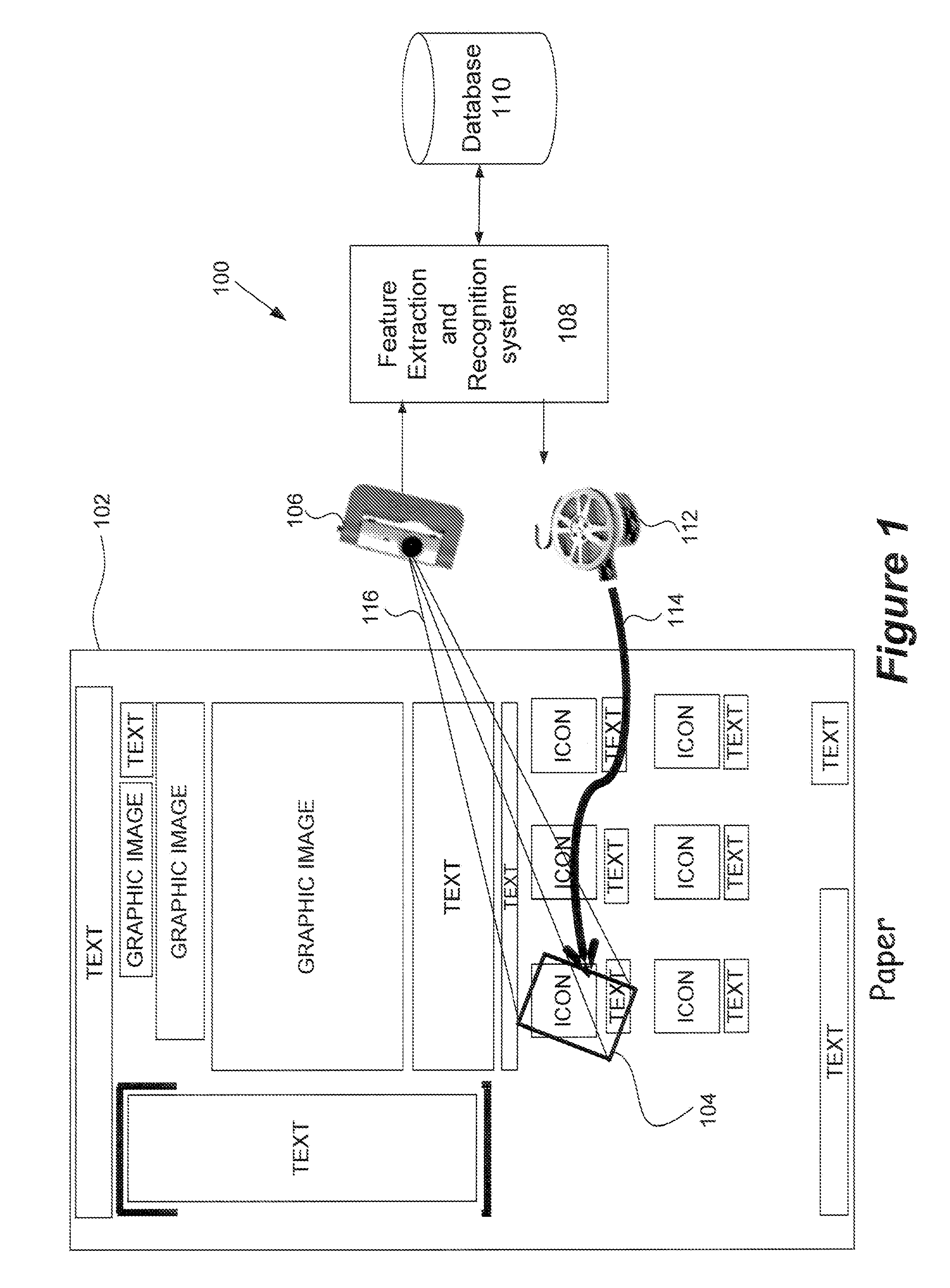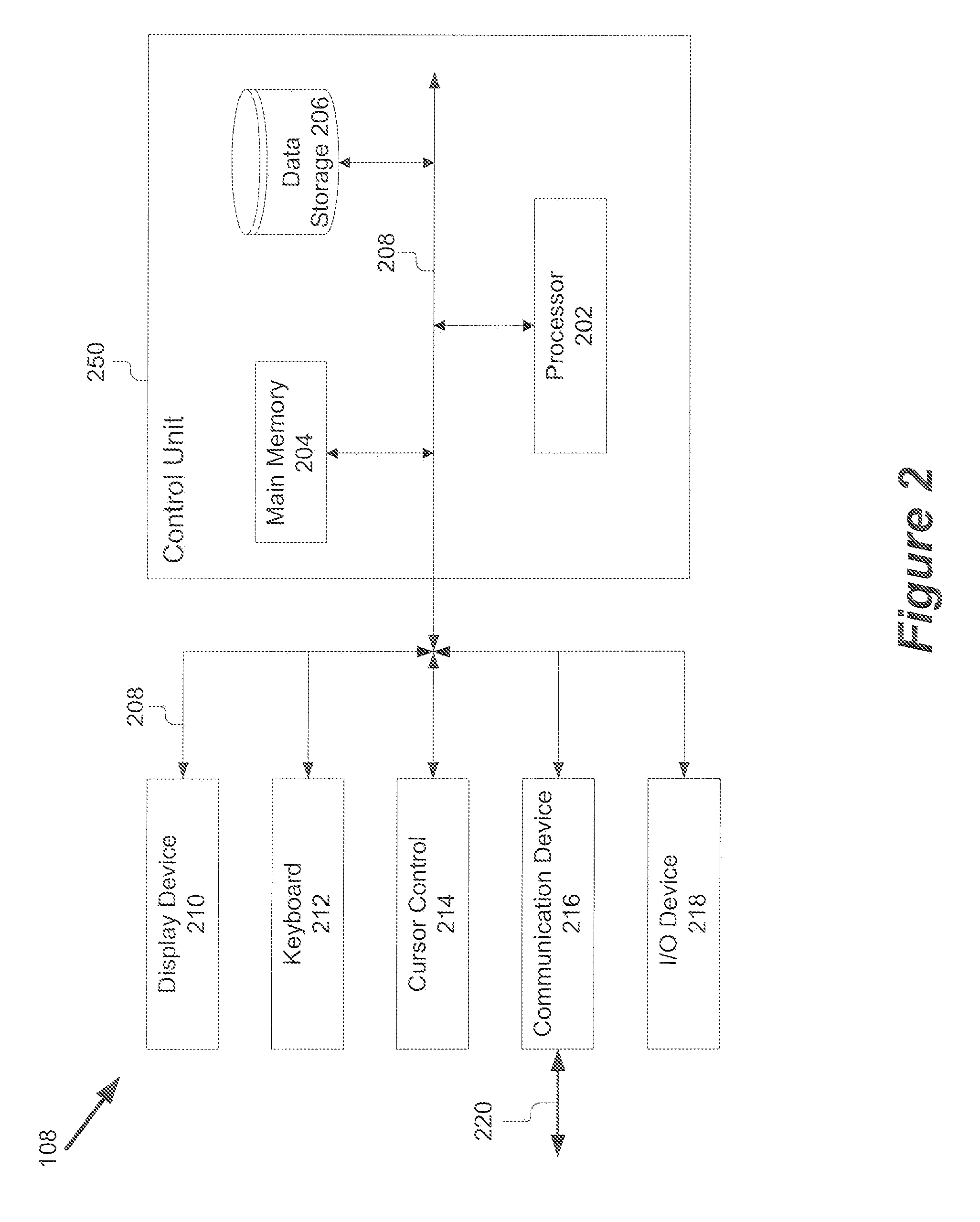Invisible Junction Feature Recognition For Document Security or Annotation
a technology of which is applied in the field of invisible junction feature recognition for document security or annotation, can solve the problems of not being able to bridge the gap between static printed media (i.e., paper documents), still very difficult and/or computationally expensive to use printed documents to access or even find the electronic document from which paper documents were generated, and not being able to use such low quality images for electronic document retrieval
- Summary
- Abstract
- Description
- Claims
- Application Information
AI Technical Summary
Benefits of technology
Problems solved by technology
Method used
Image
Examples
second embodiment
[0083]Referring now to FIG. 4, functional flow diagram of an embodiment of a feature extraction and recognition system 108 in accordance with the present invention is shown. The feature extraction and recognition system 108 includes two operational modes: a first mode in which the original electronic document is rendered and input and a feature index is stored for the invisible junction features from the input; and a second mode in which a image patch is input, and a feature description is created and used to retrieve a corresponding document, point and viewing region are output. For convenience and ease of understanding like reference numerals are used for like components having the same or similar functionality as that described above for other embodiments. This second embodiment of the system 108 includes the feature extraction unit 310, the feature indexing unit 312, the feature retrieval unit 314 and the geometric estimation unit 316.
[0084]FIG. 4 illustrates the flow of informa...
first embodiment
[0105]Where indexing is done in accordance with the first embodiment described above with reference to FIG. 7A, the feature retrieval unit 314 sends the feature points detected in the query image down to the quantization, and collects the hit lists at the leaf nodes. This produces a table of candidate document pages, along with a list of coordinates (x, y) for each candidate page. This can be sent to the geometric estimation unit 316 for further processing.
[0106]In the alternate embodiment of indexing in FIG. 7B, the retrieval process begins with the feature retrieval unit 314 receiving 802 a feature descriptor from the feature extraction unit 310. The feature retrieval unit 314 performs pattern recognition based on local features. The feature retrieval unit 314 searches for the page document whose feature points best corresponded to the feature points of the given query image patch. To establish the correspondence (in other words to recognize), the feature retrieval unit 314 recogn...
third embodiment
[0114]FIG. 9C is a flow chart of a method for geometric estimation in accordance with the present invention. This embodiment illustrates the use of two separate geometric estimations, and their operation in parallel for increased performance. The process begins by receiving the candidate page identifications have been identified by the feature retrieval unit 314, and then sorts 920 the candidate document pages based on the number of feature points in each candidate document page. The sorted list of candidate pages is then provided for two separate geometric estimations. One geometric estimation ranks 922 the candidate pages using feature detection with geometric constraints. For example, the rotation or orientation and scale attributes of feature detection are enforced in this geometric estimation. A second geometric estimation ranks 924 the candidate pages using a projective transformation with geometric constraints such as discussed above with reference to FIG. 9B. For example, th...
PUM
 Login to View More
Login to View More Abstract
Description
Claims
Application Information
 Login to View More
Login to View More - R&D
- Intellectual Property
- Life Sciences
- Materials
- Tech Scout
- Unparalleled Data Quality
- Higher Quality Content
- 60% Fewer Hallucinations
Browse by: Latest US Patents, China's latest patents, Technical Efficacy Thesaurus, Application Domain, Technology Topic, Popular Technical Reports.
© 2025 PatSnap. All rights reserved.Legal|Privacy policy|Modern Slavery Act Transparency Statement|Sitemap|About US| Contact US: help@patsnap.com



